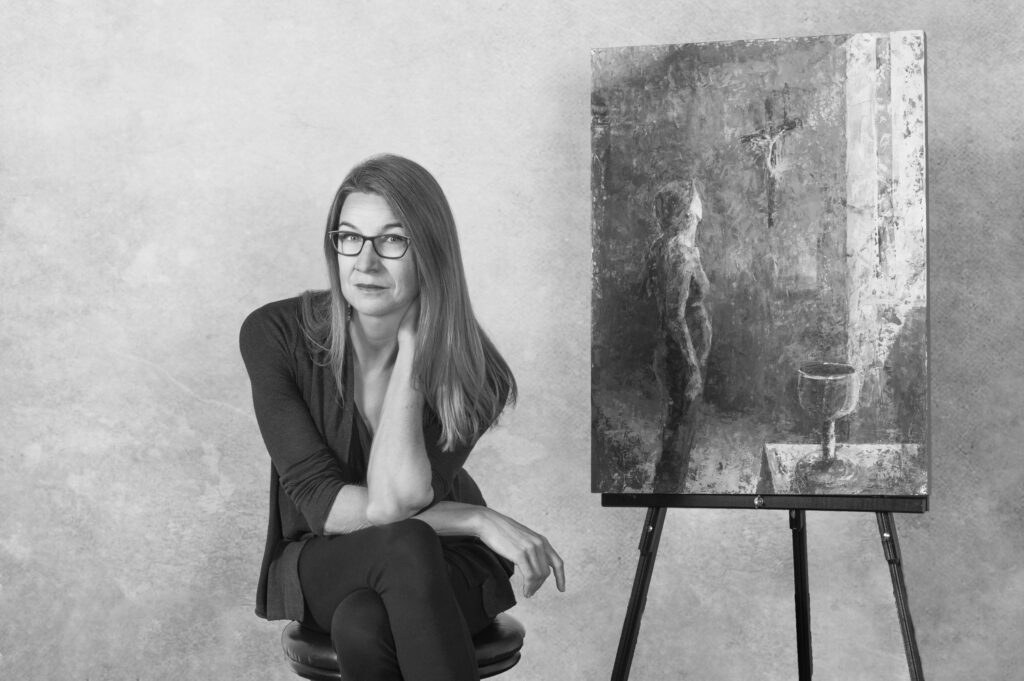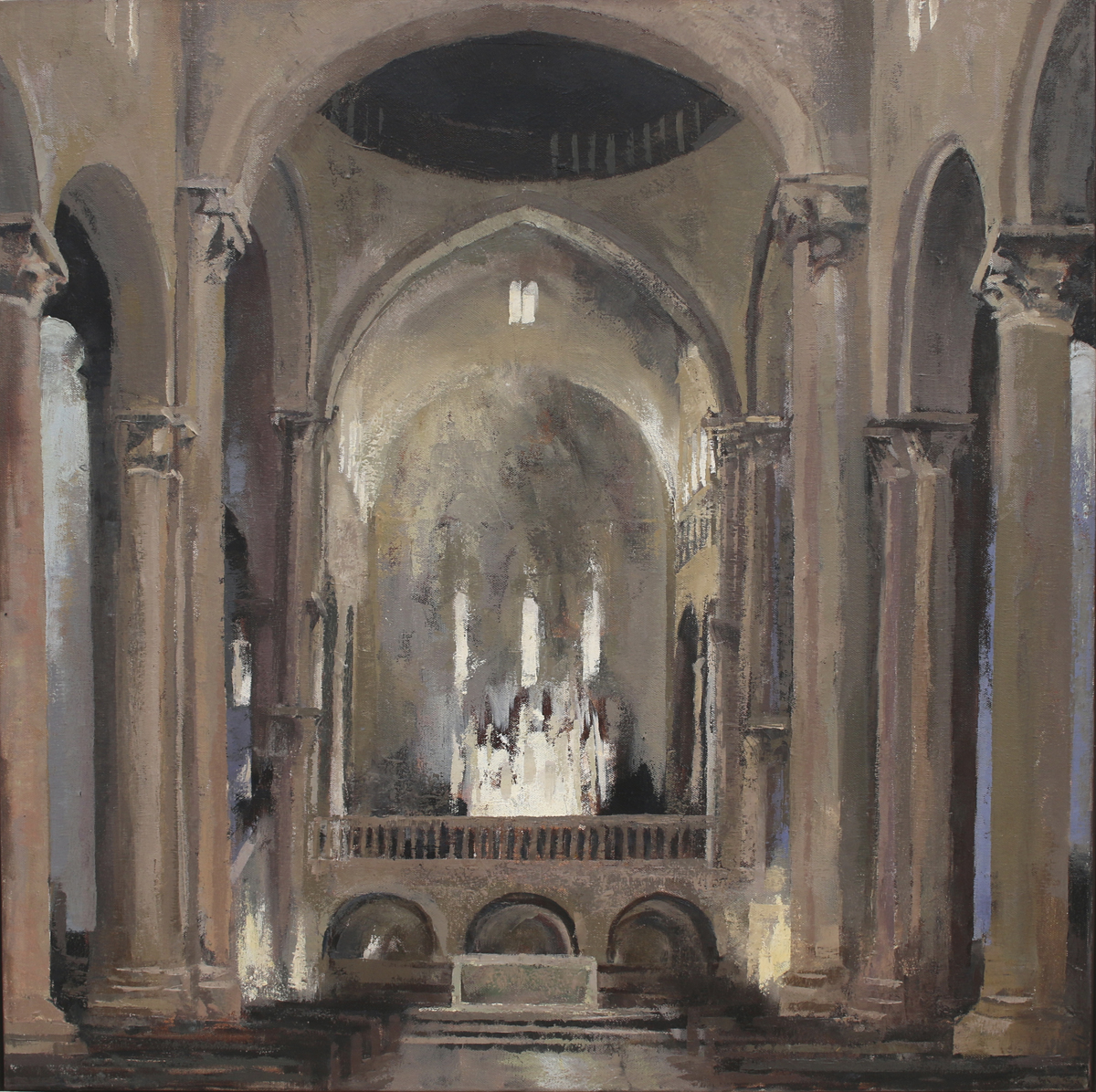
Santa Maria della Pieve in Arezzo
During my last trip to Italy I was on a quest to visit as many Romanesque churches as I could. I wanted to create sketches and watercolors on site in preparation for my recent exhibit of art inspired by Italian architecture. Arezzo, in Tuscany, is perhaps most famous for the Legend of the True Cross frescoes by Piero della Francesca. I had visited previously visited Arezzo many times with a group, for the purpose of experiencing the monumentality of Piero’s paintings in person.
On this trip, I did spend time with the Piero frescoes. However, my real area of interest was the 13th century church of Santa Maria della Pieve. This Romanesque church is a little ways uphill from the church of San Francesco. The interior of the church of Santa Maria della Pieve reaches greater heights than that of the humble Franciscan church where the Piero frescoes are located. The exterior of this church, facing the main piazza in Arezzo, famously appeared in Roberto Benigni’s 1997 film La Vita e’ Bella.
Santa Maria della Pieve as a Pilgrimage Church
The sculptural complexity of the Romanesque churches evolved partly as a practical solution to the medieval practice of pilgrimage. How to manage traffic flow of those wishing to visit while still accomplishing the liturgical purposes? The side aisles, ambulatories and easily accessible split level crypts are an invitation to explore, to wander and to worship.
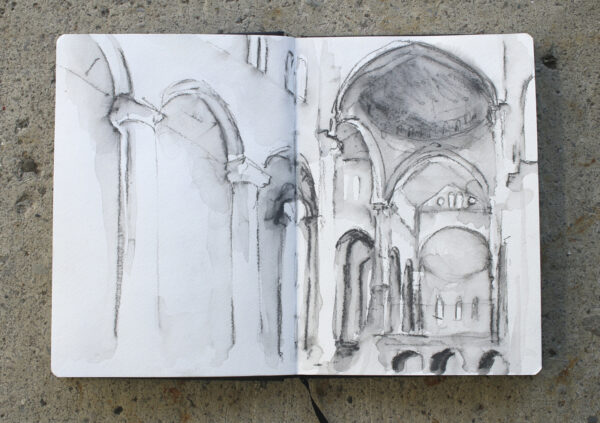
“Santa Maria della Pieve Interior”, water-soluble graphite on paper, Italy Sketchbook 2023 ©Michelle Arnold Paine All Rights Reserved
The easily accessible crypt is visible and reachable from inside the main church. It was built to house the relics of San Donato, the martyred 4th century bishop of Arezzo (later the relics were moved to Murano, near Venice). This crypt design made it easy to manage traffic of the many pilgrims who came to revere the relics. Structures such as this Arezzo church were designed to welcome large numbers of people on a journey towards God. The space invited crowds to encounter relics and saints, sacraments and signs of God’s work on earth. I spent a couple of hours sketching inside the church of Santa Maria della Pieve. It is many years now that I built this practice of exploring churches for an intermingling of drawing and prayer.
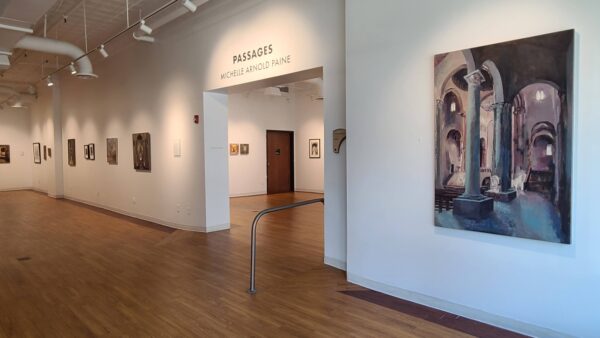
Installation shot of “Passages” at Mount Vernon Nazarene University. Photo courtesy of Seth Paine. All Rights Reserved
Preparing for Studio Painting
The sketches and photos from that day became the reference material for painting Santa Maria della Pieve once I returned to the US. It had been some years since I had painted any paintings larger than 36″ x 48″. I was itching to work larger. After my trip I felt that the grandeur of Santa Maria della Pieve fit the 40×60 canvas waiting in my studio. This painting became the statement piece at the entrance to “Passages”. I found the contrast of dark side aisles with the light and airy nave to be particularly compelling. As a result, I allowed myself to play with color relationships to express this contrast.
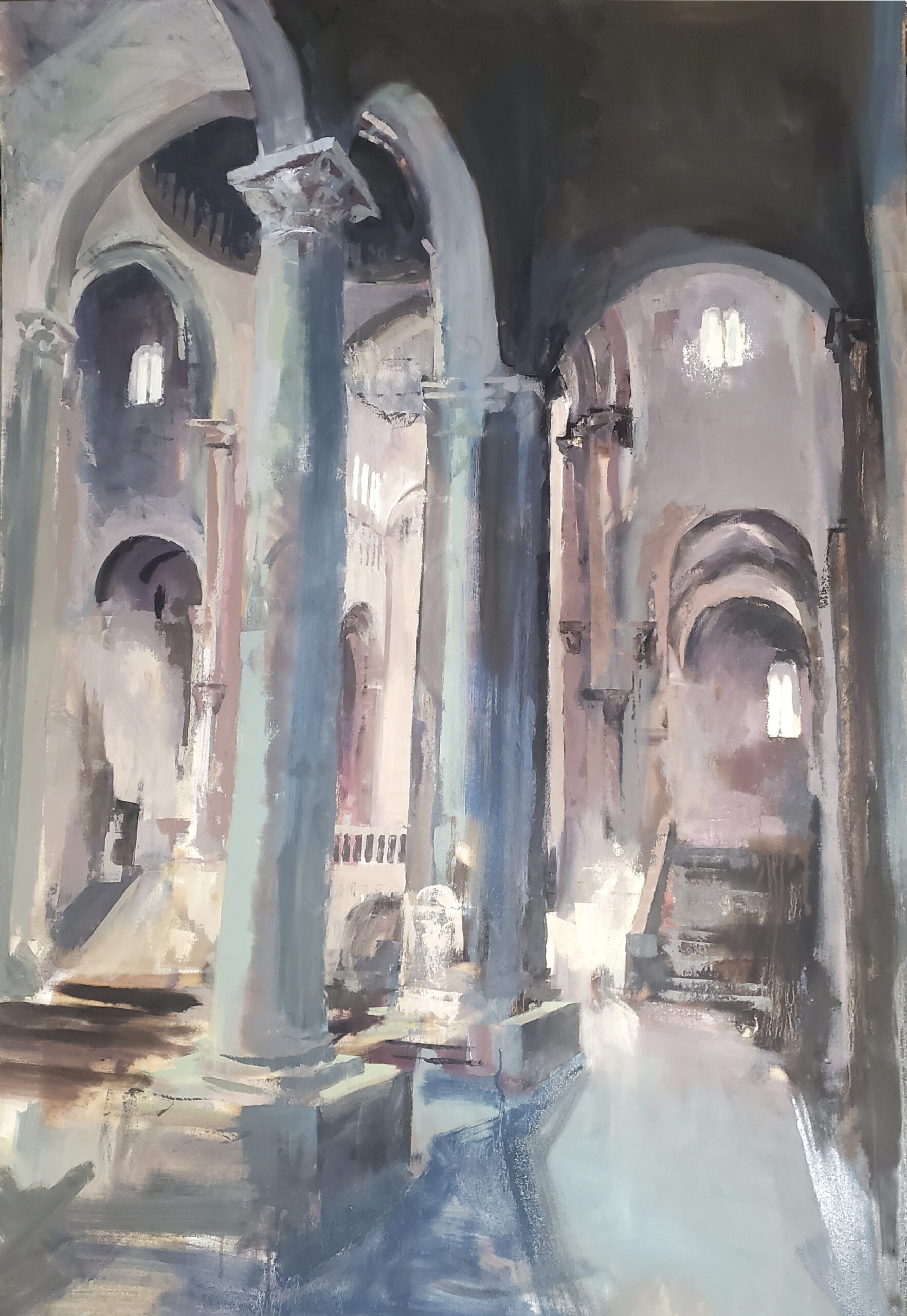
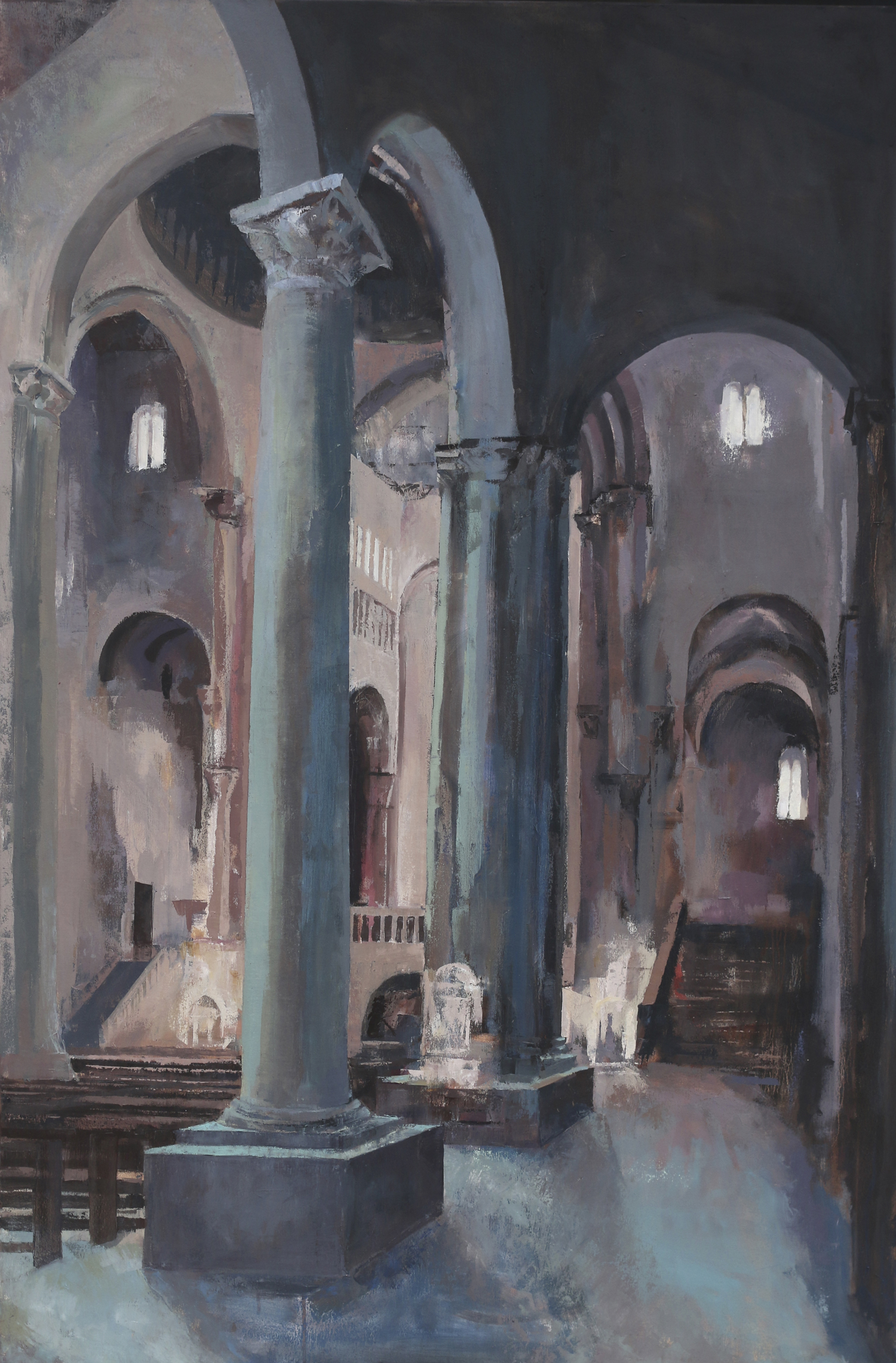
Painting A Sensation
The time spent sketching inside the church helped me not only record my visual impressions, but feel the space. Those hours enabled me to create the un-nameable sensation in my paintings which moves beyond the visible. Upon viewing these paintings, one of one of my friends recently remarked on her memory of the dampness of Italian churches. It was a high compliment, that the combination of colors on a canvas could bring back to her that unique impression.

